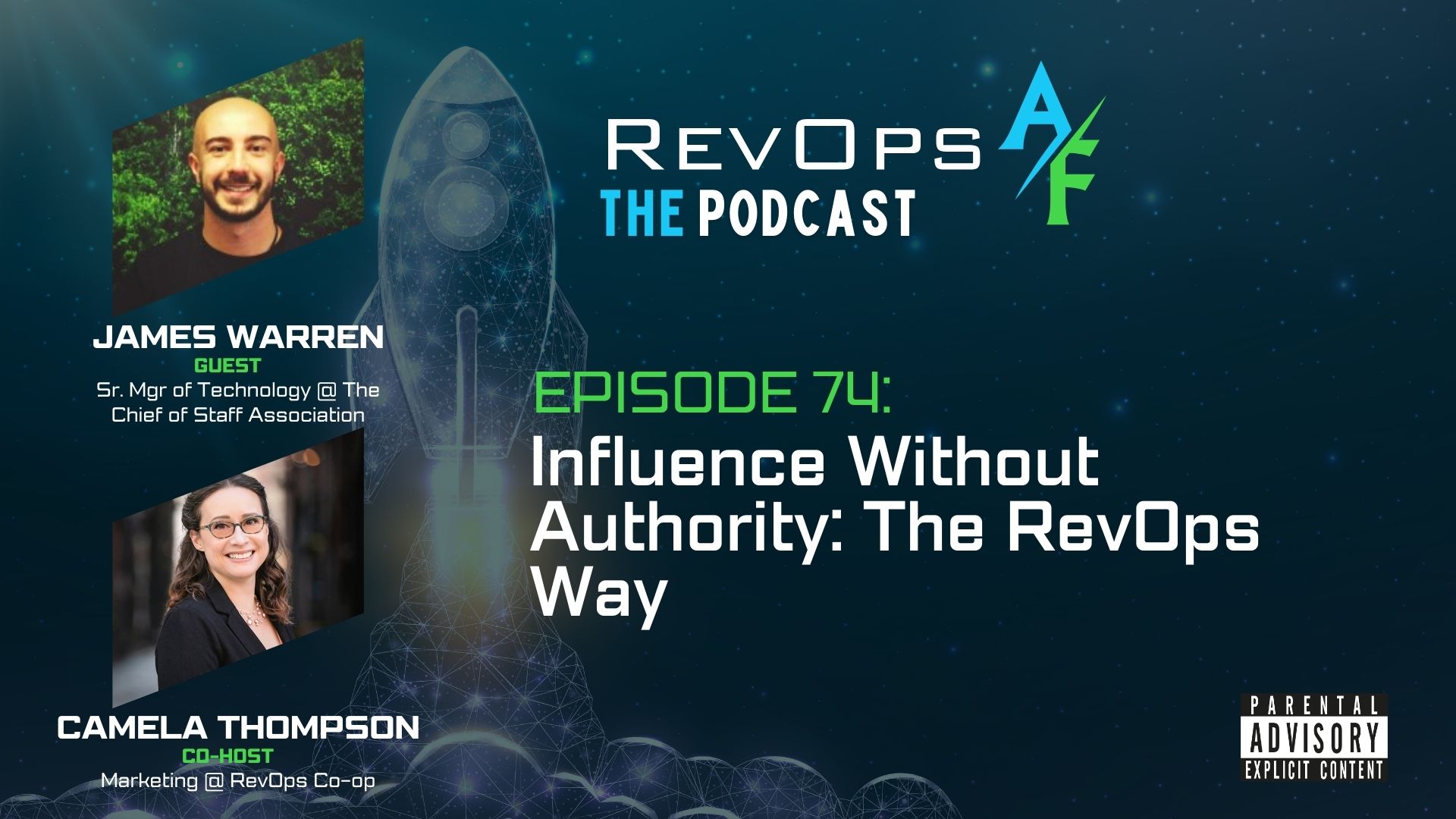
Episode 74: Influence Without Authority: The RevOps Way
Build RevOps influence without authority. James Warren shares strategies for stakeholder buy-in, agile methods, and going from reactive to strategic.
Welcome back to the RevOpsAF podcast - the only podcast for people who are RevOpsAF. In this episode, co-host and RevOps Co‑op CEO Matt Volm sits down with Robert Dyer, VP of Revenue Strategy at Suplari, for an in-depth conversation about what it takes to rebuild a revenue tech stack from scratch - twice.
Robert takes us through Suplari’s transformation journey: from independent SaaS startup, to Microsoft acquisition, and finally to a scrappy, post-spinout rebirth. Along the way, he addresses fragmentation, consolidation, AI integration, and how the modern RevOps stack is evolving for lean, scalable teams.
Robert’s path into RevOps is a common one: he started in field sales, moved into management, and realized the broken systems he was complaining about were worth owning. That’s when he began shifting into operations.
“I started to recognize a lot of the processes I wasn’t super happy with as a salesperson. When I became a manager, I finally had the power to fix them - and that’s when RevOps clicked for me.” – Robert Dyer
Initially, Suplari’s stack looked textbook: Marketo, Salesforce, Outreach, and ZoomInfo. Yet, the systems didn't “talk,” data syncs broke, and marketing attribution was a mess - leading to blurred handoffs and poor insight alignment.
This experience echoes the common “tech stack issues” RevOps teams face. You’ll want to revisit our blog post 12 Common Tech Stack Issues & How to Fix Them for remediation strategies and preventative insights.
The Suplari team had flexibility under Microsoft’s umbrella, but they also had to merge Suplari’s systems into the larger Microsoft GTM ecosystem. The result? A hybrid tech stack that balanced cost efficiency with operational pragmatism.
This period is reminiscent of discussions in Your 2025 RevOps Tech Stack, Simplified, where we highlight the importance of avoiding technical debt and focusing on lean, scalable stacks.
Post-spinout, everything was Google Sheets - no CRM, no automation, a CS dashboard with 40 tabs. It was a playbook of chaos - but also a blank slate.
Check out our webinar Running RevOps at a Seed‑Stage Startup, which emphasizes how early adoption of disciplined tech and data hygiene pays off even in chaotic environments.
Although Robert is no stranger to Salesforce, he chose HubSpot as the single system for CRM, marketing, and CS - giving power to a one-person ops team.
Our article Looking for a new CRM? Start Here offers a detailed decision framework on what to prioritize when choosing a CRM - and it supports Robert’s reasoning that ease-of-use often beats feature sets.
Today’s Suplari stack includes:
Robust, modular, and cost-effective - all topped off with intelligent waterfalls in Clay to automate enrichments and score leads at scale.
AI isn’t about replacing people—it’s about shifting focus. Robert uses it to:
This AR (admin reallocation) approach aligns with GenAI + Marketing Analytics: What RevOps Needs to Know, where we explore how AI can be tactical, targeted, and measurable.
The new model? Lean teams, strategic tech, no excess headcount. Robert’s experience supports this new mindset: do more with less. It's a recurring theme in our content, too - and you’ll find strong parallels in The In’s and Out’s of Tech Stack Consolidation.
If you're tasked with building a RevOps stack in 2025, this episode is essential listening. Rober’s journey proves that:
Looking for more great content? Check out our blog, join our community and subscribe to our YouTube Channel for more insights.
Our average member has more than 5 years of RevOps experience. That means you’ll have real-time access to seasoned professionals. All we ask is that you’re generous with your knowledge in return.